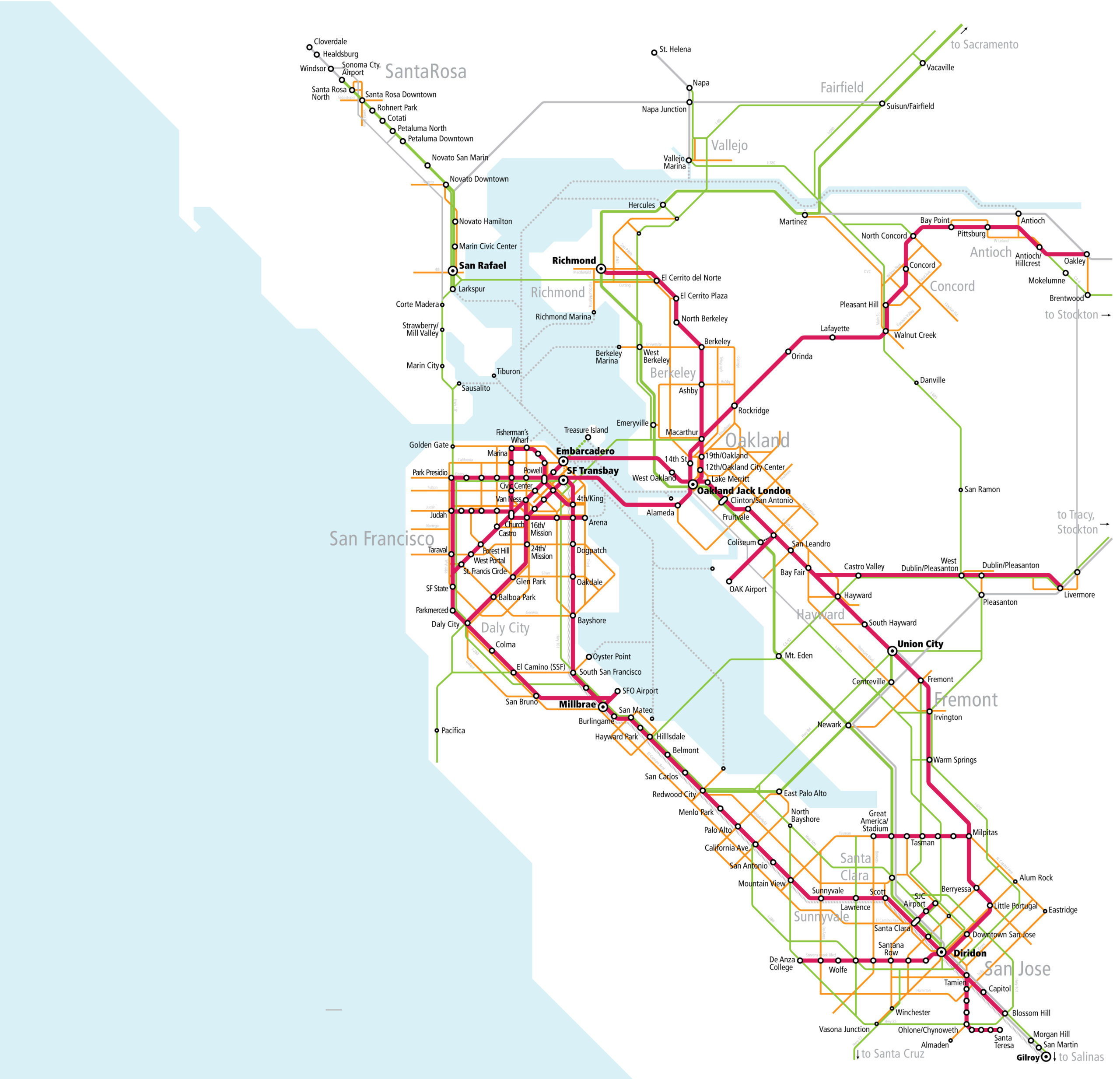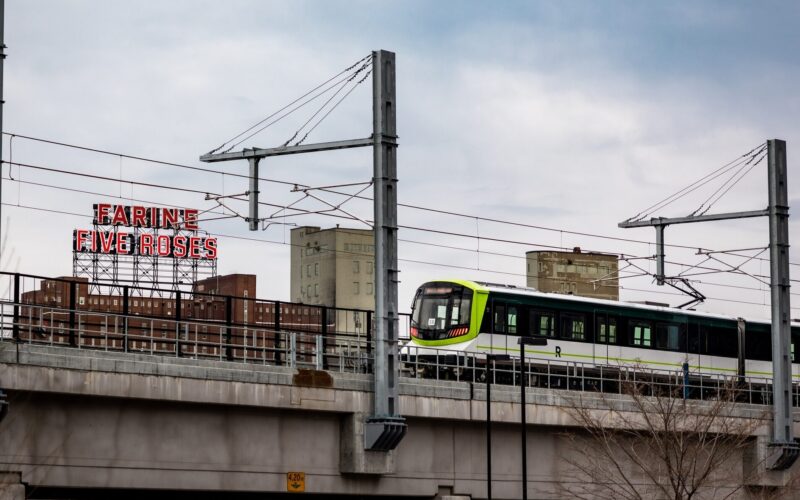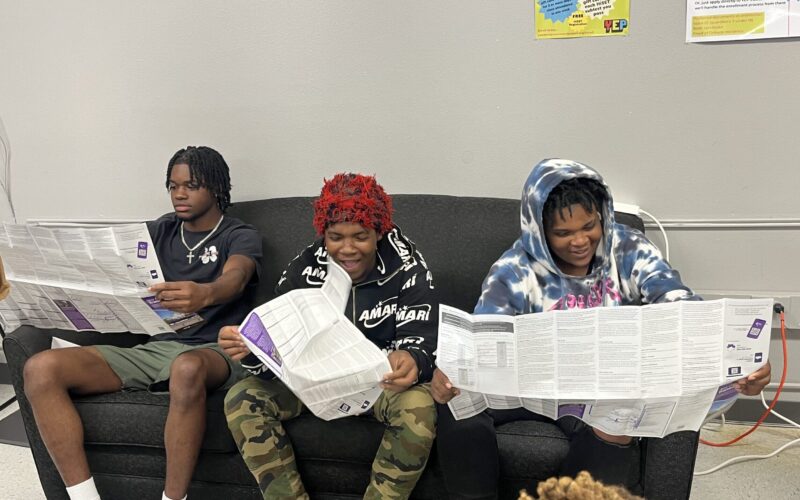
Navigating transit across the Bay Area can be a test of endurance. The 27 different transit agencies across the region’s nine counties use different fare structures, discounts, wayfinding signage, and maps.
The introduction of the Clipper Card in 2002 was intended to help. For the first time, riders could use the same payment card for rides across the region. But the technology alone wasn’t enough to solve the problem. To this day, riders whose trips require them to use multiple agencies still face a penalty – interagency transfers are only sparingly accepted, and most agencies don’t coordinate their schedules, creating long waits between transfers. And each system uses its own maps, intimidating all but the most intrepid commuters.
The advocacy group Seamless Bay Area has been working diligently to change this. In 2019, it released a Vision Map, which depicted what a fully integrated system could look like. In this dream scenario, a rider could pay one fare to zip all the way from San Jose to San Francisco to Santa Rosa, never needing to think about which “brand” of transit they were using.
After several years of advocacy from Seamless and their allies, that vision is inching closer to reality. A bill now moving through the California State Legislature, SB917 (2022) aka the “Seamless Transit Transformation Act,” directs the Bay Area transit agencies to develop an integrated transit fare structure by 2024, create a plan to coordinate schedule and service standards, and develop a single regional transit map and standardized way-finding system. SB917 stipulates that these policies would become mandatory in order for agencies to receive state transit funds.
By presenting integrated transit as something both irresistible and achievable, and building a broad coalition in support of the vision, Seamless was able to break through a longstanding bureaucratic morass. With the Bay Area’s infamous housing costs continuing to push people further from employment centers and ridership slow to recover from the pandemic, the initiative could be the key to bringing back riders, and making transit a viable option for tens of thousands more people.
“Our goal is a world-class, integrated, higher ridership, public transit network that expands people’s access to opportunity, and makes transit the most convenient and competitive way of getting around and that brings many more people to our region,” says Ian Griffiths, Seamless Bay Area’s policy director and co-founder.
Seamless formed in 2018, largely out of frustration with Clipper’s limitations and a firm belief that the fragmented nature of transit in the Bay Area was suppressing ridership.
Fare integration is not a new idea for the Bay – conversations about coordinating fares between agencies began in the 1980s, and the Bay Area’s regional planning body, the Metropolitan Transportation Commission (MTC) formed in 1970 with integration in mind. There have been various attempts at fare integration over the last several decades, but the efforts haven’t been resourced or coordinated enough to be successful.
In order to break the logjam, Seamless developed a multi-pronged strategy that involved building a broad, diverse, grasstops and grassroots coalition. “What we’ve tried to do is bridge the worlds of research and thought leadership and like action [with] community groups. And I think there’s a need for that type of advocacy,” said Griffiths.
Seamless worked with organizations like LUNA—Latinos United for a New America—and Bayview-Hunters Point Community Advocates to learn about barriers to transit access in the region. They found that the lack of coordination between agencies and costly fares for multi-agency trips were a barrier to transit for many Bay Area residents.
Says Seamless’s Advocacy Director, Adina Levin: “What we heard consistently is that people, including low-income, people of color who mostly use transit for short, local trips, that that’s not because that was [the service] they wanted, it was because what they were limited to.”
Seamless spent the next two years building public support for integrated transit by developing a set of seamless transit principles, and urging local governments and organizations to endorse them. These efforts prompted MTC to initiate a regional study of integrated fares in 2019.
The COVID-19 pandemic and ensuing ridership crisis lent additional urgency. In the summer of 2020, MTC created the Blue Ribbon Transit Recovery Transit Task Force, which was charged with recovering from the pandemic and shaping the future of integrated transit in the region.
The Blue Ribbon Task Force included MTC Commissioners, transit GMs, business leaders, advocates, and state legislators, and provided motivation to transit agencies to be proactive in collaboration. According to Levin, Seamless looked at where previous integration efforts had fallen short, and brought in equity-focused groups and elected officials to the task force process and accompanying outreach in order to increase the likelihood of success.
One of the initiatives prioritized by the task force was fare integration. Levin says that the Fare Integration study, which showed clear benefits to ridership and equity, became the focus of broad-based organizing that brought together a diversity of business, equity, housing environment, and local government stakeholders. Seamless called on supporters of the Seamless Principles to support the Fare integration Study recommendations, generating a joint letter to transit general managers in the region from over 50 organizations.
Seamless also convened a group of over 200 individual transit advocates around the region who regularly gave public comments in front of various boards about why integrated transit was important to them.
Throughout the process, the effort was buoyed by the support of the BART Board of Directors, which was the first Bay Area transit agency to officially endorse the Seamless principles. “Ultimately, most of the transferring between the agencies that happen in the Bay Area actually involves BART. So we’re at the center of it,” says Director Rebecca Saltzman.
In addition to BART, there’s backing for SB917 across the region, including from SPUR, the business group Bay Area Council, local governments, and numerous elected officials. But several challenges to full implementation remain.
For an integrated system to work, both task forces identified the need for a network manager – an idea adopted from similarly-fragmented systems throughout Europe and North America.
This body would have the power to coordinate and oversee a unified system for all 27 agencies, local and regional governments, and other stakeholders involved. But what exactly this will look like is still up for discussion. Levin says that this plan “[…] doesn’t necessitate merging them [the agencies] all into one. But there does need to be an entity that has this responsibility and authority.”
Biggest is the question of how revenue will be shared among the agencies, and concerns that foregoing predictable transfer revenue will negatively impact agencies. To ask agencies to voluntarily forego predictable transfer fare revenue—to be compensated instead by the network management’s algorithm—is hard.
There’s currently a plan in place to test revenue sharing. The regional Fare Integration study – whose advisory body was co-chaired by Levin – recommended and MTC funded a limited, regional pass pilot for public colleges and universities, employers and other institutions. If successful, the program is expected to expand, easing the agencies into the envisioned future.
Next are the technical challenges of coordinating between agencies. Each of the 27 agencies to be folded into the Seamless plan currently has its own rules for fare collection, transfers within the same service, minimum card balance to board a bus or train, and rules for whether a rider has to tap in or out of a bus or train. Unifying these policies is certainly surmountable, especially with buy-in and technical leadership from larger organizations to support smaller agencies’ efforts.
There’s also the need for system-wide data collection, processing, evaluation, and application, ensuring that riders can access accurate, real-time data across agencies. This effort will have costs, and these and the identified integration costs will be on top of funds needed to keep the lights on, especially as ridership slowly recovers to pre-pandemic levels.
As of March, SB917 hasn’t yet passed out of the California Senate. But despite the remaining challenges, Seamless Bay Area is hopeful for the future of an integrated system – the bill just gives the agencies a jumpstart and a finish line. Advocates in cities with similarly fragmented transit systems, like New York and Chicago, could soon look to the Bay Area as inspiration, rather than as a cautionary tale.
 On Track for Success: Decoding Montreal’s REM Model for Efficient Transit Projects in the U.S
On Track for Success: Decoding Montreal’s REM Model for Efficient Transit Projects in the U.S
Why is it so difficult to build subway and light rail projects in America? Every week there’s a new story about an American transit project that is behind schedule, over budget, or “paused”. Montreal’s Réseau express métropolitain (REM) stands out as a recent North American project that has begun to address some of the challenges that have foiled so many others. What is REM getting right that other projects aren’t?
Read More Winning Free Fares for Youth in New Orleans
Winning Free Fares for Youth in New Orleans
Most transit agencies rely on fare revenue to fund operations, meaning many are forced into the position of needing to collect fares from the people who can least afford it. To change this paradigm, advocates across the country are fighting for - and winning - programs that allow agencies to zero out fares for youth, removing one of the largest barriers to youth ridership.
Read More